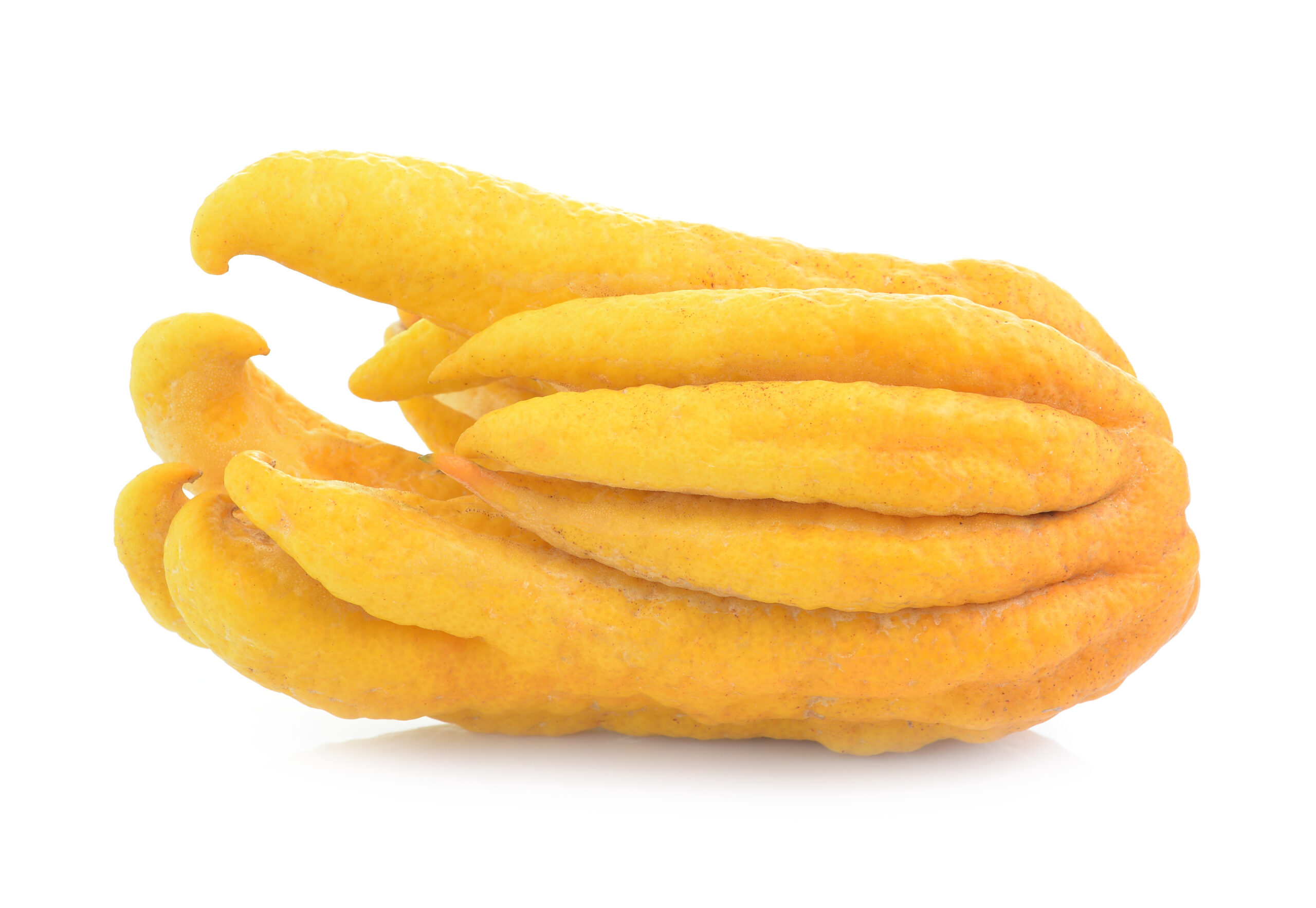Seasons/Availability
Buddha’s Hand is available in late fall through early winter.
Current Facts
Buddha’s Hand citron is botanically classified as Citrus medica var. sarcodactylis and is closely related to the lemon, lime, orange and grapefruit. Buddha’s Hand citron is also known as fingered citron due to its finger-like shape. It is not typically eaten raw, but rather used for its zest or juiced for flavoring applications.
Usage
Buddha’s Hand citron can be used in both sweet and savory recipes requiring citrus zest such as baked goods, custards or desserts, sauces, marinades or salad dressings. Unlike most other fruits with edible skins, it can be grated directly into recipes that require citrus zest. The fruit can also be used to make jellies or jams; it is often candied by simmering in a sugar syrup for several hours, then left to dry. It is used as an essential ingredient in Chinese New Year celebrations and its fragrant rind is often used to flavor liqueurs and vinegar. In Japan, Buddha’s Hand citron slices are candied and served on special occasions such as weddings or tea ceremonies.
Nutrition
The Buddha’s Hand citron contains vitamins A and C, calcium, phosphorus, potassium and magnesium. Its slightly sweet flesh is low in calories and contain some dietary fiber. Additionally, the peel of the fruit provides numerous health benefits due to its antioxidant and anti-inflammatory properties. It is believed to help boost the immune system, reduce inflammation, improve digestion and lower blood pressure.
Cooking
The most common way to use Buddha’s Hand citron is by zesting its fragrant rind. The zest can be used to flavor cakes, cookies, puddings, sorbets and other desserts. Its thick rind can also be candied and used as a garnish for cocktails or salads. Another favorite way to enjoy this versatile citrus fruit is by simmering it in a light syrup with honey or spices and using it as a topping over ice cream or yogurt. For savory dishes, chop the flesh of the fruit into small pieces and add it to stir-fries, curries or soups. The zest and juice can also be used to make marmalade and pickles. Buddha’s Hand citron is known for its powerful aroma as well as its flavor, so it should be used sparingly in a recipe. Additionally, due to the high sugar content of this fruit, most recipes call for cooking it with other ingredients before serving.





